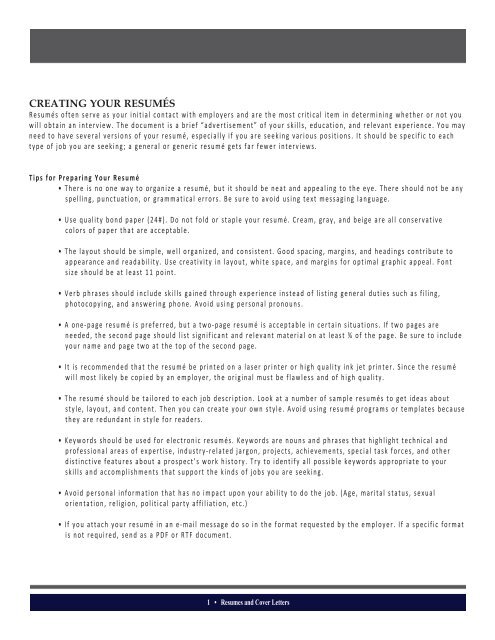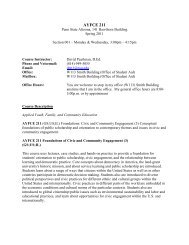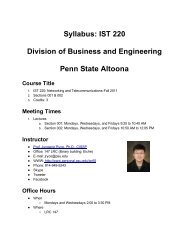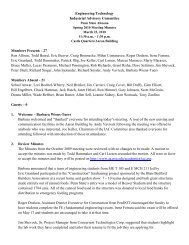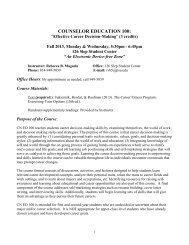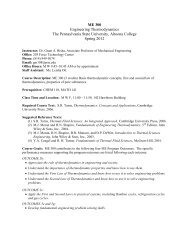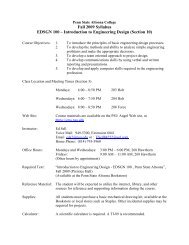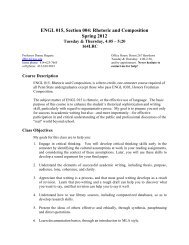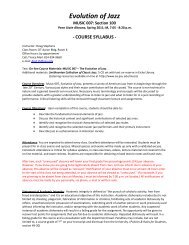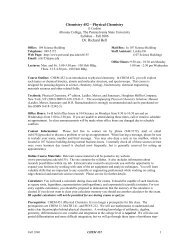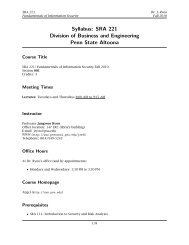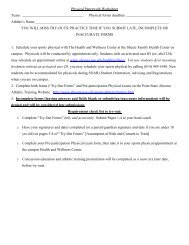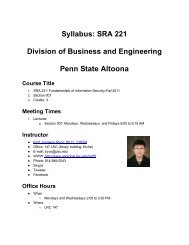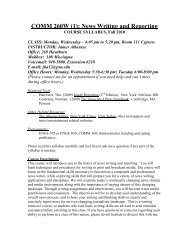Career Services - Penn State Altoona - Penn State University
Career Services - Penn State Altoona - Penn State University
Career Services - Penn State Altoona - Penn State University
You also want an ePaper? Increase the reach of your titles
YUMPU automatically turns print PDFs into web optimized ePapers that Google loves.
CREATING YOUR RESUMÉS<br />
Resumés often serve as your initial contact with employers and are the most critical item in determining whether or not you<br />
will obtain an interview. The document is a brief “advertisement” of your skills, education, and relevant experience. You may<br />
need to have several versions of your resumé, especially if you are seeking various positions. It should be specific to each<br />
type of job you are seeking; a general or generic resumé gets far fewer interviews.<br />
Tips for Preparing Your Resumé<br />
• There is no one way to organize a resumé, but it should be neat and appealing to the eye. There should not be any<br />
spelling, punctuation, or grammatical errors. Be sure to avoid using text messaging language.<br />
• Use quality bond paper (24#). Do not fold or staple your resumé. Cream, gray, and beige are all conservative<br />
colors of paper that are acceptable.<br />
• The layout should be simple, well organized, and consistent. Good spacing, margins, and headings contribute to<br />
appearance and readability. Use creativity in layout, white space, and margins for optimal graphic appeal. Font<br />
size should be at least 11 point.<br />
• Verb phrases should include skills gained through experience instead of listing general duties such as filing,<br />
photocopying, and answering phone. Avoid using personal pronouns.<br />
• A one-page resumé is preferred, but a two-page resumé is acceptable in certain situations. If two pages are<br />
needed, the second page should list significant and relevant material on at least ¾ of the page. Be sure to include<br />
your name and page two at the top of the second page.<br />
• It is recommended that the resumé be printed on a laser printer or high quality ink jet printer. Since the resumé<br />
will most likely be copied by an employer, the original must be flawless and of high quality.<br />
• The resumé should be tailored to each job description. Look at a number of sample resumés to get ideas about<br />
style, layout, and content. Then you can create your own style. Avoid using resumé programs or templates because<br />
they are redundant in style for readers.<br />
• Keywords should be used for electronic resumés. Keywords are nouns and phrases that highlight technical and<br />
professional areas of expertise, industry-related jargon, projects, achievements, special task forces, and other<br />
distinctive features about a prospect’s work history. Try to identify all possible keywords appropriate to your<br />
skills and accomplishments that support the kinds of jobs you are seeking.<br />
• Avoid personal information that has no impact upon your ability to do the job. (Age, marital status, sexual<br />
orientation, religion, political party affiliation, etc.)<br />
• If you attach your resumé in an e-mail message do so in the format requested by the employer. If a specific format<br />
is not required, send as a PDF or RTF document.<br />
1 • Resumes and Cover Letters


